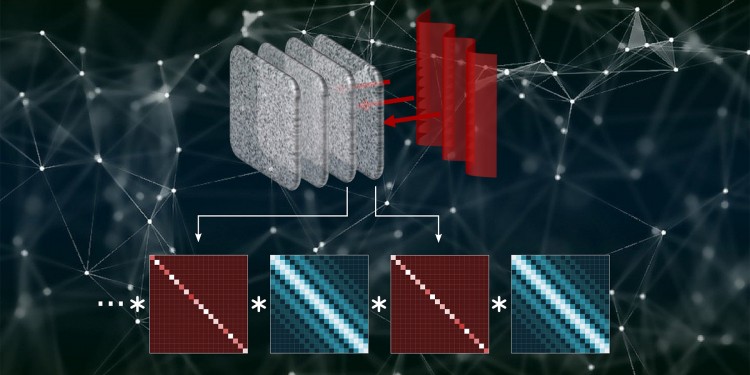
Optics and Photonics: Ideal platforms for artificial intelligence
In a recent nature perspective, international experts in the field of optical neural networks, optical deep learning and photonic computing have put their expertise together to review the path from pathbreaking optical neural networks and optical computing realizations in the past fifty years and how they advanced to photonic artificial intelligence applications.
The team, which includes the physicist Prof. Cornelia Denz from the Institute of Applied Physics at the University of Münster, discusses also promises and challenges for future deep optics and photonics and its next-generation applications in knowledge representation, learning, planning and perception.

Many of these tasks require huge data set for learning or processing and thus at the same time fast and low-power execution. Here, optics come in to play. Optical computing is able to meet these needs of artificial intelligence on the one hand, and is capable of providing advantageous approaches for image-based and visual implementations of artificial intelligence. Especially when it comes to deep learning with multiple layers of an artificial intelligence neural network, optics is advantageous since it naturally handles millions of data in parallel. Image recognition and filtering as well as parallelized matrix multiplication makes optics and photonics an ideal candidate for artificial intelligence inference.
For example, linear optical elements can calculate convolutions, Fourier transforms, random projections and many other operations without any effort as a “byproduct” of light–matter interaction or light propagation, and being executed at the speed of light. “Since these operations are the fundamental building blocks of every deep neural network architecture that drive most modern visual computing algorithms, photonics holds a huge transformative potential for future artificial intelligence systems. In the last twenty years the tremendous development in optical components have led to a spatial and temporal resolution that makes visual computer applications with photonics much more versatile than their electronic counterparts”, explains Cornelia Denz.
Original publication
Gordon Wetzstein, Aydogan Ozcan, Sylvain Gigan, Shanhui Fan, Dirk Englund, Marin Soljačić, Cornelia Denz, David A. B. Miller & Demetri Psaltis (2020). Inference in artificial intelligence with deep optics and photonics. Nature 588, 39-47. DOI: 10.1038/s41586-020-2973-6
